The science of turfgrass has come a long way in recent decades.
Whether turfgrass breeders and programs produced varieties for a carpet-like lawn, the perfect ball roll on a golf putting green, or to support the weight and athleticism of 300-pound football players, science has guided the way to innovative new turfgrasses and helped train the next generation of high demand turf scientists.
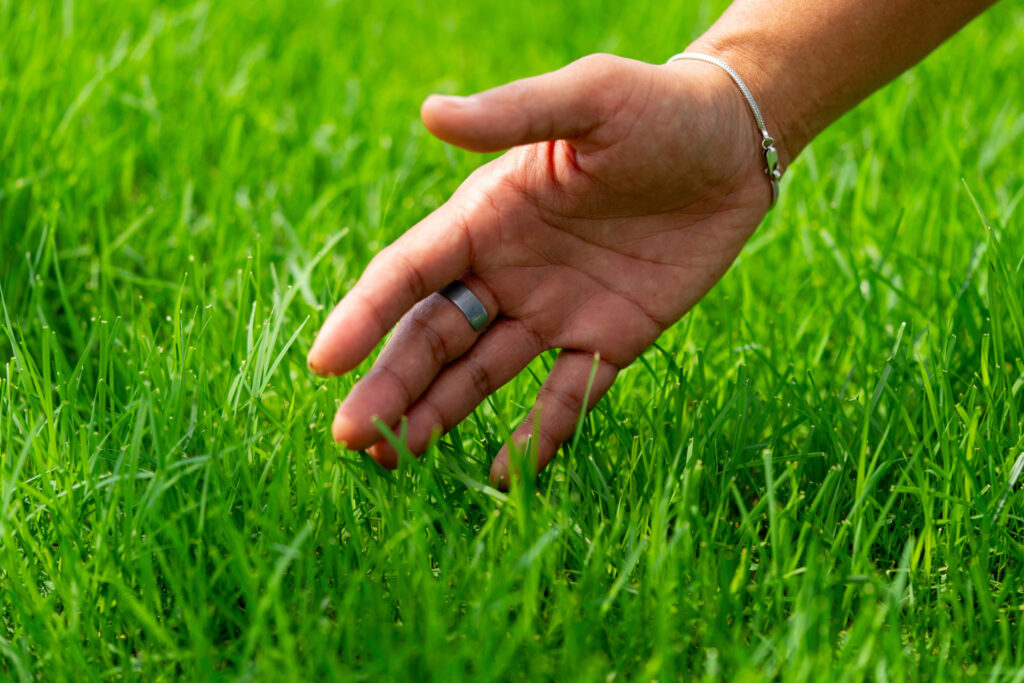
Today, the Texas A&M Turfgrass Program is a partnership among Texas A&M AgriLife Research, the Texas A&M AgriLife Extension Service and the Department of Soil and Crop Sciences in the Texas A&M College of Agriculture and Life Sciences. The turfgrass program continues to meld boundary-pushing methods and technologies to create and improve turfgrass varieties. Program scientists are improving turfgrass’s environmental and economic sustainability while meeting ever-increasing aesthetic and performance demands from end-users.
“The Aggie turf program has a strong history, but it has really developed into a world-class research juggernaut that is making consistent breakthroughs in addressing big picture challenges,” said David Baltensperger, Ph.D., professor and head of the Department of Soil and Crop Sciences. “Our researchers are leading innovation, and we are also investing in our extension efforts to engage with stakeholders and deliver turfgrass science, whether that be management data, tips and tools, or new and exciting turfgrasses.”
Science of turfgrass: Responding to challenges
Turfgrass is an important part of daily life. It is so present that it can be easy to overlook what turfgrass provides us mentally and physically despite our constant interaction with it in urban, suburban and rural environments. Turfgrass straddles many roles in our daily lives, and science continues to evolve its environmental and economic sustainability while providing safe, reliable surfaces for leisure and sports, in addition to creating many new career opportunities in Texas.
“The turfgrass program brings together nationally and internationally recognized experts from across Texas A&M to pursue leading-edge innovations and thriving turfgrasses that improve lives and livelihoods,” said G. Cliff Lamb, director of AgriLife Research.
More than 80% of Texans now live in urban areas, and turfgrass covers as much as 50% of Texas’ urban area. At the same time, rural homes, schools, businesses and playing fields also use turfgrass for ground cover.
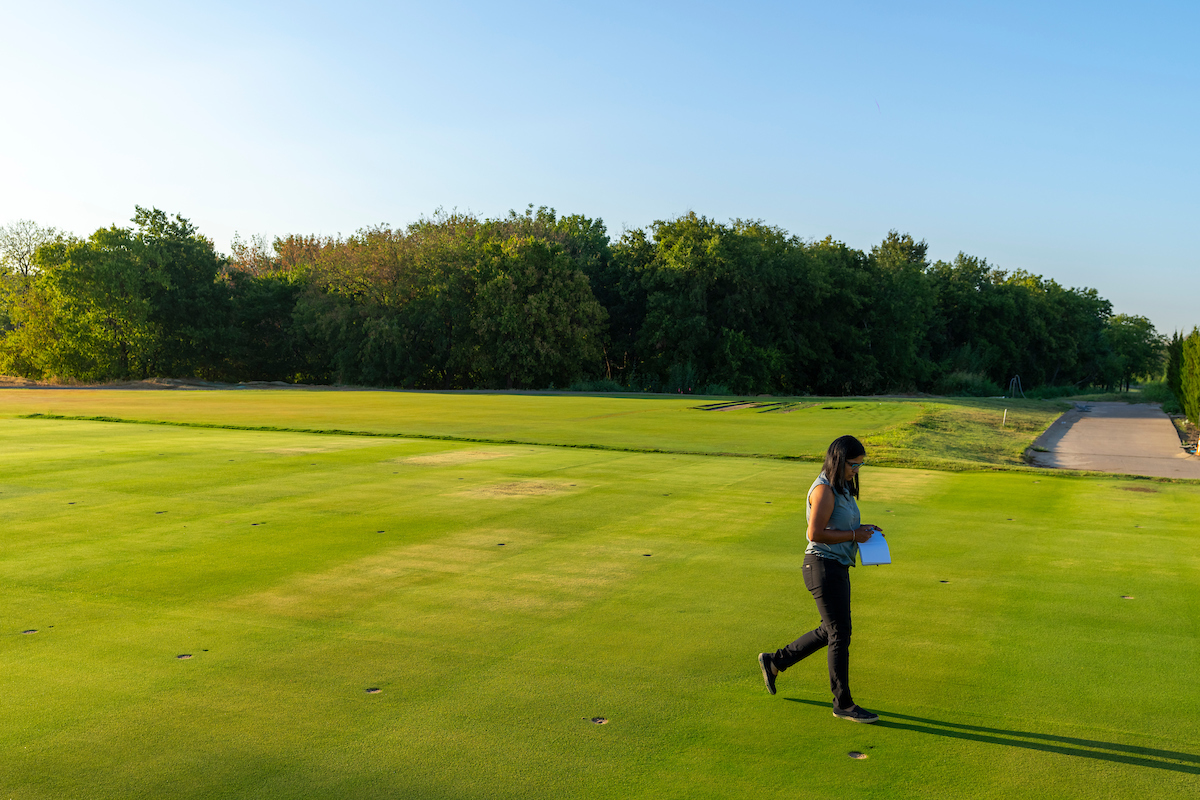
“We’re all tackling challenges in different but interconnected ways. There is tremendous work being done in the turfgrass program, and delivering positive impacts within the industry…is what we are passionate about.”
Ambika Chandra, Ph.D.
Texas A&M AgriLife Research
Texas is No. 2 in sod production in the U.S. with more than 56,000 acres of turfgrass being grown by 127 sod-producing farms. Annual sod production revenues exceed $150 million.
The Texas turfgrass industry continues to experience higher demands for urban turfgrass solutions as the state’s population continues to boom, said Ambika Chandra, Ph.D., professor in the Department of Soil and Crop Sciences and AgriLife Research leader of the Turfgrass Breeding and Urban Landscapes Program at Dallas.
At the same time, homeowners are looking for lower-maintenance varieties that require fewer inputs like fertilizer, pesticides and water. The expansion of urban turfgrass areas and changing environments have created challenges for the turfgrass industry, including stricter water restrictions and lower water quality for irrigation.
Future water regulations could increase challenges to managing warm-season turfgrasses, which comprise the most prolific varieties across Texas, Chandra said. While the health benefits of green spaces are well documented, she said, natural turfgrass is being replaced by alternative landscapes and synthetic turfgrasses in response to water restrictions.
Turfgrass breeding provides economic, environmental sustainability
The Texas A&M Turfgrass Program is taking a synergistic approach to provide sustainable turfgrass solutions for the industry and consumers, Chandra said. Research, technology and applied science continue to lead the way.
“We are working with breeding technologies like gene editing and genomics and developing those tools to improve our ability to identify and express turfgrass characteristics that meet challenges,” she said. “At the same time, we’re also interacting with homeowners, turfgrass managers and producers, cities and municipalities.”
The Texas A&M AgriLife turfgrass program germplasm collection includes more than 700 unique ecotypes used within its breeding program. Chandra’s work as a turfgrass breeder focuses on crossing cultivars that feature quality aesthetic characteristics with those expressing other desirable characteristics like drought and/or disease resistance to create hybrids.
This genetic collection has allowed the program to develop and commercialize 21 turfgrass varieties since 1980. Some of those varieties are grown in Texas and 15 other U.S. states, as well as Brazil, Australia and Italy.
In 2022, the program introduced Cobalt, a drought-resistant St. Augustine grass variety that directly addresses water conservation, requiring nearly half the amount of irrigation of other industry standard varieties, Chandra said. Cobalt also provides the aesthetic and sensory characteristics desired by consumers.
The program is also breeding warm-season turfgrasses like zoysias for cold-hardiness. Cold tolerance in turfgrasses provides end-users in colder parts of the country with varieties that balance aesthetics, optimal end-use performance, and input requirements with winter kill prevention.
“The program is tackling a variety of challenges within the turfgrass industry and much of them relate to sustainable management practices,” she said. “We are not developing a new variety just to have a new variety. We are developing them with a clearly defined goal when it comes to its potential end use. Our expertise and ability to meet the range of environmental and performance challenges has positioned us to be a leader in this space.”
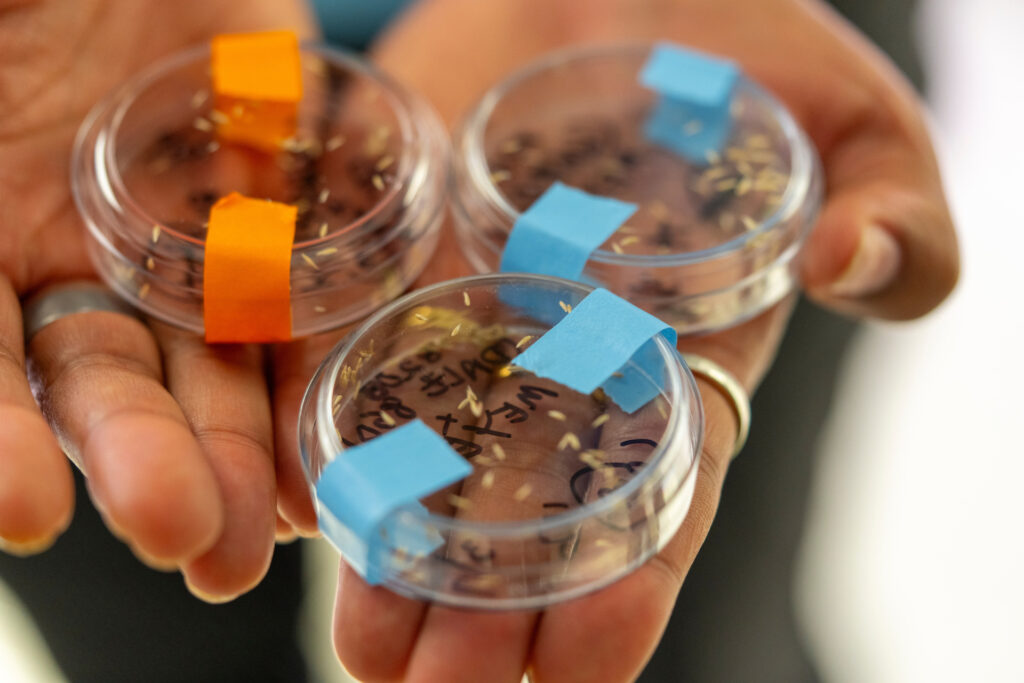
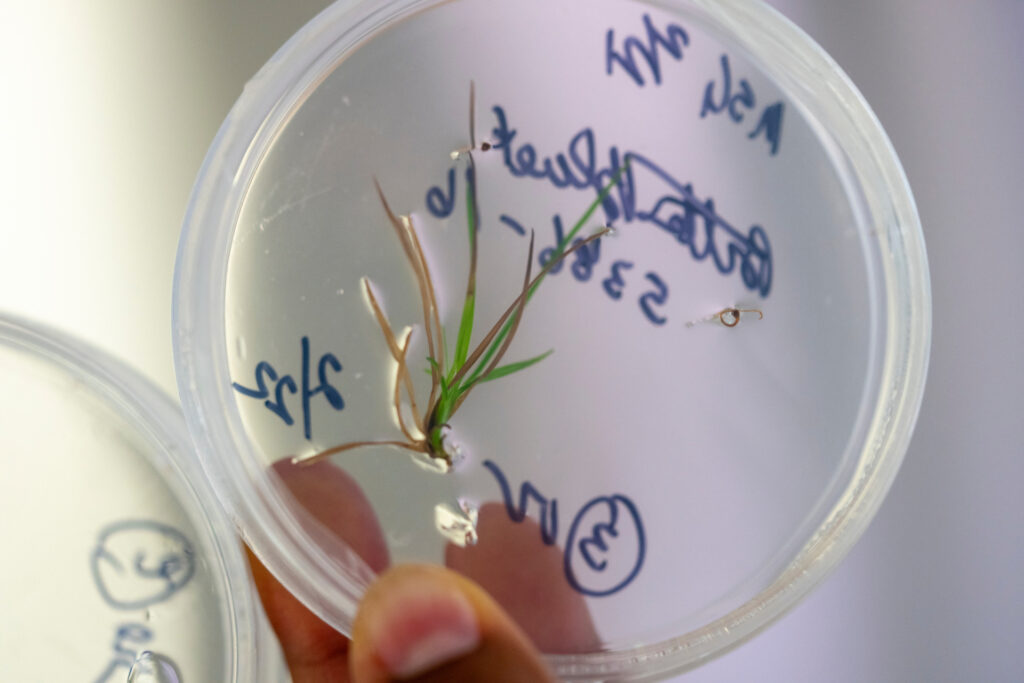
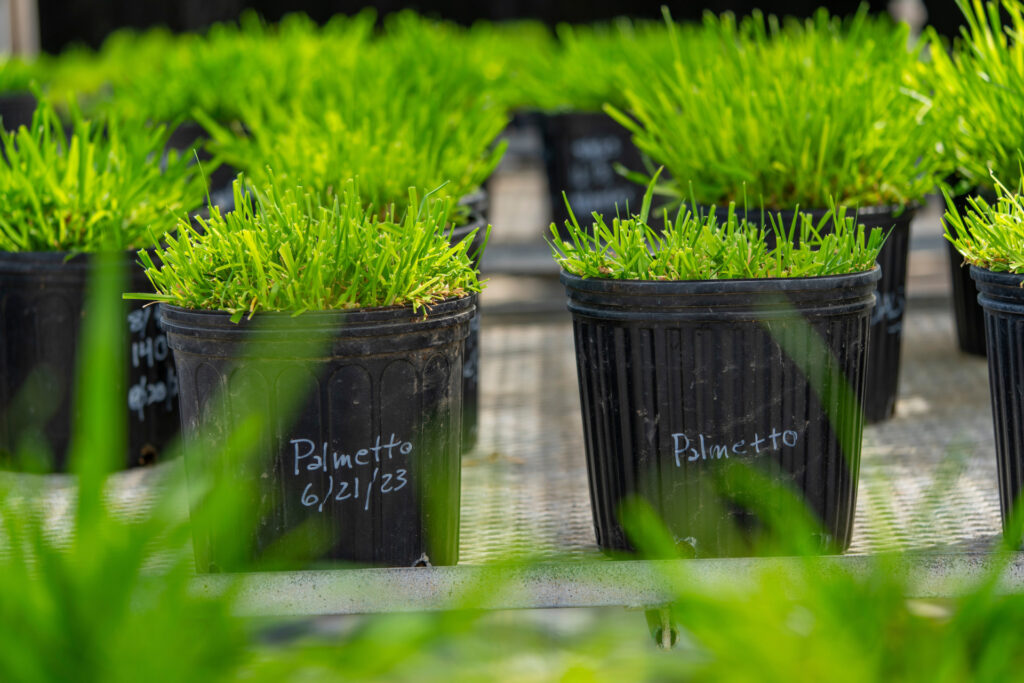

Research, technology and applied science steering program
Across Texas, a multidisciplinary team of turfgrass experts of The Texas A&M University System brings together research, teaching and extension work to develop and disseminate technologies, practices and improved turfgrass cultivars that tolerate increasingly extreme environments.
This team includes Chase Straw, Ph.D., AgriLife Research turfgrass management scientist and assistant professor; Ben Wherley, Ph.D., AgriLife Research turfgrass ecologist and professor; and Manuel Chavarria, Ph.D., AgriLife Extension turf specialist and assistant professor, all in Bryan-College Station. Staff as well as undergraduate and graduate students also support the program’s efforts.
Program experts collaborate on turfgrass initiatives with other land-grant universities across the U.S. as well as public entities like the Texas Department of Agriculture, U.S. Department of Agriculture and National Institute of Food and Agriculture, in addition to parks and recreation departments around the state and country. Texas A&M turfgrass experts also work with a range of stakeholders, including industry and professional organizations like the U.S. Golf Association, USGA; Sports Field Management Association; and the Texas Nursery and Landscape Association.
Team members focus on a range of turfgrass and related topics from sports field design and construction to athlete safety and performance to best-management practices leading to greater resource-use efficiency, Wherley said.
Wherley’s primary focus is water quality. He studies the full spectrum of cause and effect – from reducing lawn and landscape runoff to management practices that help turfgrasses tolerate prolonged drought or more efficiently take up applied fertilizer nutrients.
For instance, for more than a decade, he’s worked with the USGA on course construction methods that allow golf courses to maintain improved playability and performance when poor quality irrigation water containing elevated salts and bicarbonates is used, he said.
Wherley and a team that includes faculty from the Texas A&M College of Engineering also designed a patented landscape irrigation runoff mitigation system that has been shown to reduce runoff by up to 50%.
“A lot of what we do centers around efficient use of water and nutrient resources, and we are continually evaluating best-management practices to determine how to best manage natural turfgrass systems with fewer inputs,” he said. “When it comes to conserving resources like water and managing turfgrass’s overall impact to the environment, sustainability requires a holistic approach.”
Genome sequencing, big data analytics, unmanned aerial vehicles, advanced spectral sensors and autonomous management equipment are all helping advance how turfgrasses are bred, grown and maintained.
Technology is also guiding end-user interaction with turfgrasses. Instrumentation like sensors read soil moisture and compaction levels, or hardness, and wearable technologies like vests, shoe insoles and ankle accelerometers, and helmet and mouthpiece sensors are measuring biomechanical interactions with turfgrasses, Straw said.
These technologies allow researchers to collect data that guides turfgrass varietal selection, and how sports fields are maintained in relation to outcomes like player safety and surface maintenance, Straw said.
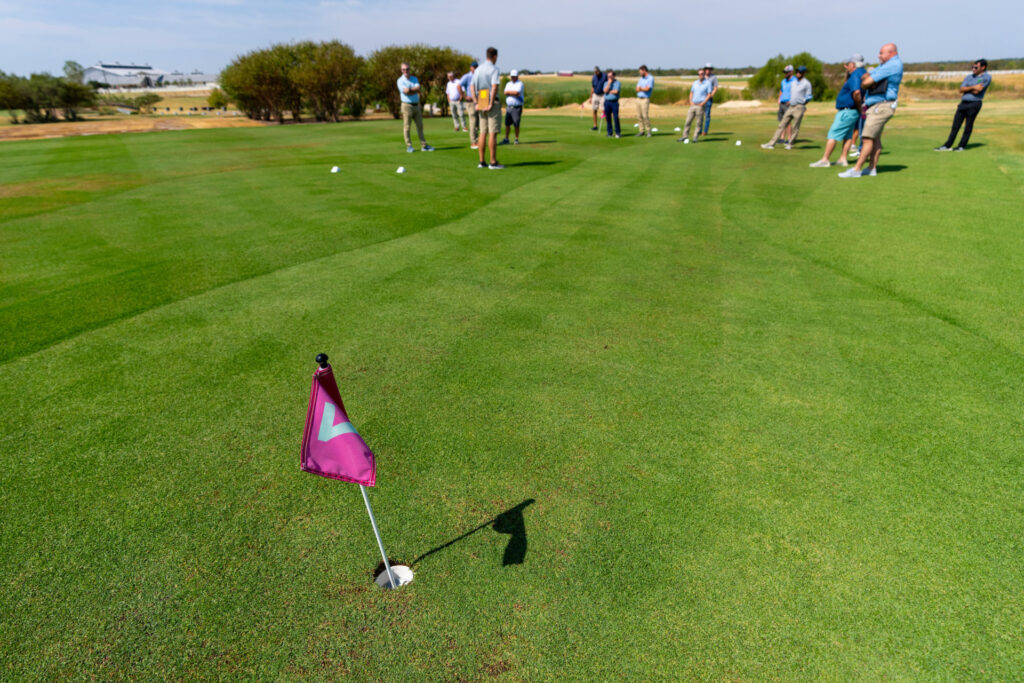

Responding to consumer demand
Research and outreach by the turfgrass program is heavily driven by end-user preference, Straw said. Whether the goal is a homeowner’s desire to walk barefoot on a lawn or meet an athlete’s performance and safety needs, turfgrasses increasingly demand less management and fewer inputs while providing higher performance and quicker recovery periods after traffic.
Straw’s research covers everything related to turfgrass maintenance – cultivation, fertility, pesticide applications – but he’s also testing new technologies to quantify the benefits of emerging methods for sports field turfgrass managers.
Safety is the No. 1 priority for turfgrasses when it comes to sports field applications, he said. The idea is to provide a playing surface that does not impact any aspect of the game being played or inhibit athletic performance.
Playing surfaces can vary based on factors like turfgrass variety, mowing height, irrigation and compaction. An extreme example, Straw said, would be comparing athletic performances on a concrete playing surface to a sandy beach. Straw’s research tries to find sports field uniformity and management recommendations that turfgrass managers can apply for specific performance outcomes.
Straw and other turfgrass research team members work with faculty in fields like kinesiology and sports medicine and management to better understand surfaces’ impact on athletic performance, safety and health.
Innovative technologies are used to analyze and quantify the impact on the athlete and the playing surface. Straw said wearable technologies like ankle accelerometers measure the force of impact as athletes run, jump, accelerate and decelerate.
Research studies by Straw use this type of biomechanical data collected during experiments featuring a range of turfgrass variety and environmental factor combinations. Experimentation helps guide his recommendations for sports field managers. For example, these data-driven assessments can help managers adjust playing surfaces for soreness in athletes in simple ways like increasing mowing height and/or irrigation based on feedback and data, Straw said.
This type of data collection is filling a major research void related to sports fields, especially quantifying the differences between natural turfgrass under a range of conditions in comparison to various synthetic turfs, Straw said.
The research will help sports field managers weigh the pros and cons of what surface is applied, he said. Scientific data will answer questions about player safety, initial installment costs, maintenance over the surface’s lifetime and impacts to the environment.
“Our program is a leader because of our world-class research faculty and facilities in Dallas and here in College Station, but it’s successful because of collaboration,” Straw said. “Turfgrass is an interdisciplinary field with huge social, economic and environmental impacts, so we work with a lot of faculty across the university, but also in collaboration with other universities and stakeholders.”
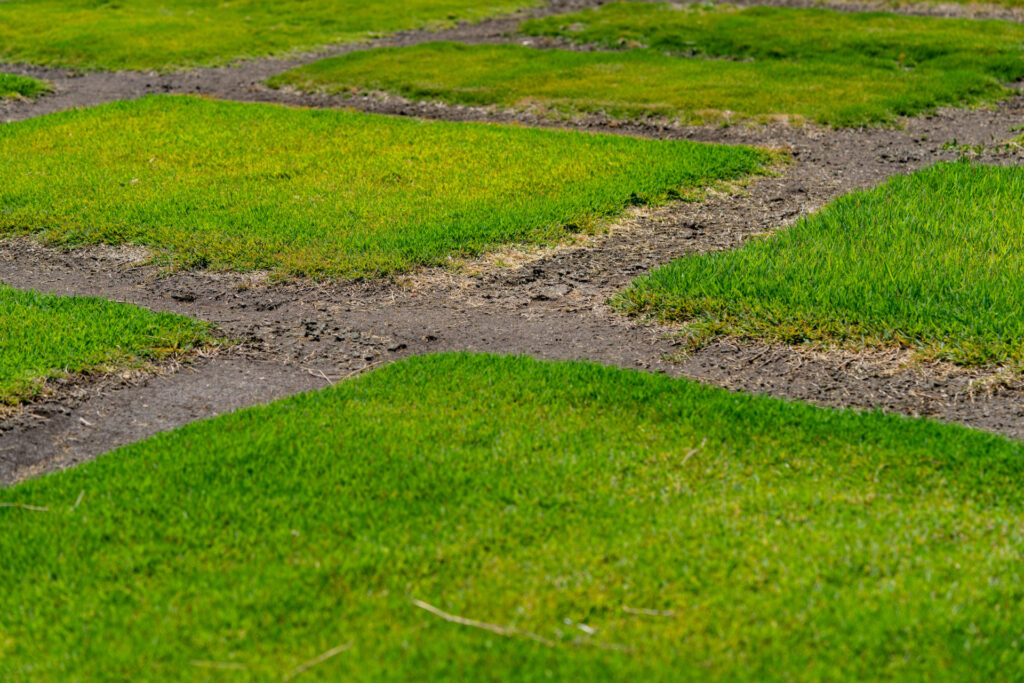
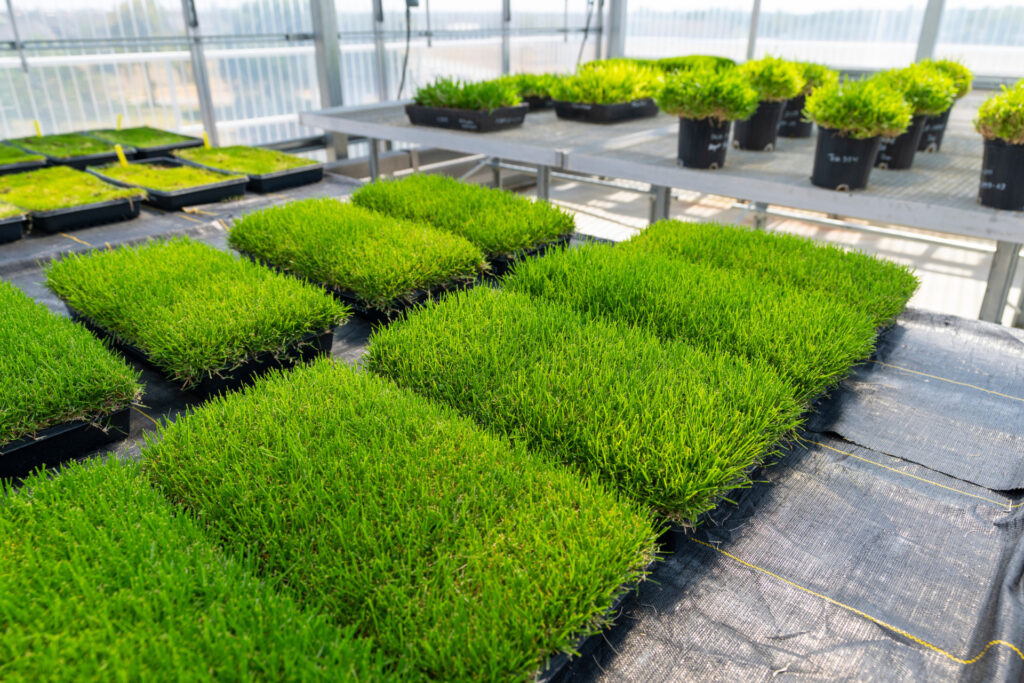
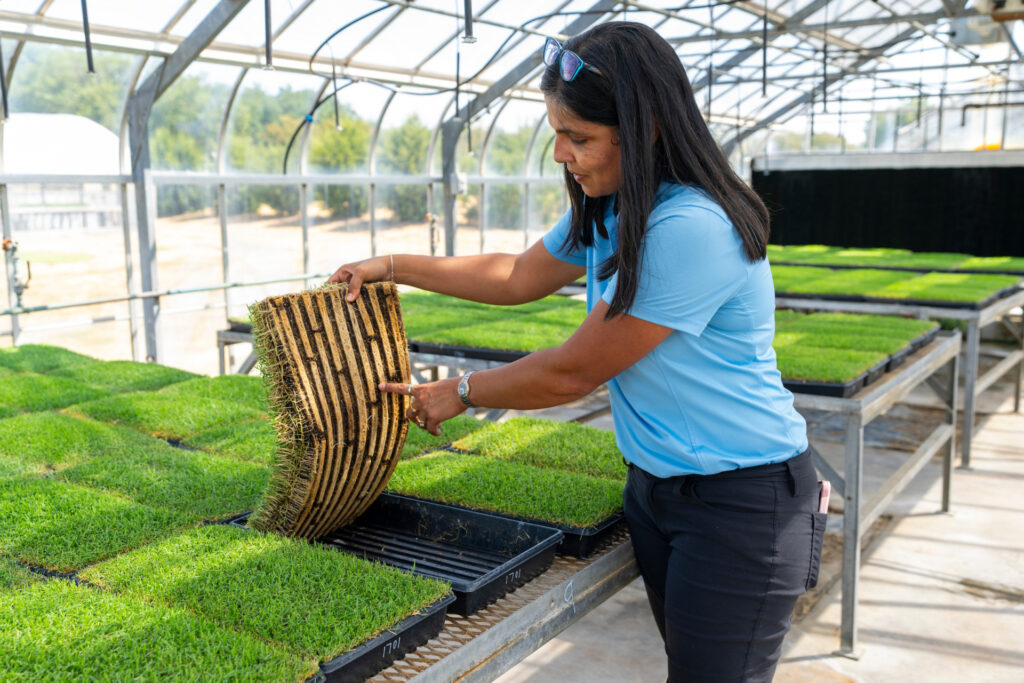

Making turfgrass better
The program is focused on producing new varieties and understanding how turfgrasses can be improved to meet increasing demands and challenges. It is also dedicated to outreach and teaching the next generation of turfgrass experts. A technological shift within the industry is influencing how the research data is disseminated to stakeholders and taught to industry professionals and future leaders, Straw said.
Educating undergraduate and graduate students and informing industry insiders, including golf course managers, municipal planners, landscape professionals and consumers, are critical aspects of the program’s mission, he said.
Baltensperger said the program’s students and staff are sought by industry and other universities because of their exposure to top-tier expert faculty and hands-on learning opportunities.
Straw cited an uptick in enrollment within the turfgrass program in recent years. He said he believes the trend is related to cutting-edge facilities, technologies and research opportunities like those available through turfgrass education at Texas A&M. Students and prospective students are also becoming aware of the broad range of career paths they could explore.
“It’s extremely important to teach and train the next generation of professionals with these newer techniques and technologies so that we continue to lead,” he said. “We place a strong emphasis on integrating those into the research we do and how we teach and train our students. We have a strong, innovative program, and the success of our students reinforces that reputation.”
Texas A&M’s turfgrass team not only educates students, but it also supports the industry, turfgrass management professionals and consumers. The program added AgriLife Extension turfgrass specialist Pablo Boeri, Ph.D., in Dallas to support those outreach efforts alongside Chavarria.
Chavarria said he and Boeri are the public interface for the program with industry professionals, residential developers and homeowner groups. Engagement with end-users is a critical piece of the program at all levels because it provides real-world feedback that can fuel the innovations needed to meet challenges and improve user experiences.
All team members contribute to research and education, but Chavarria and Boeri spend much of their time engaging with homeowners and homeowner associations, including groups like the Texas Master Gardeners and landscape professionals, to provide science-based turfgrass information and recommendations. They teach courses in English and Spanish throughout the state with much of their time dedicated to major population centers between Dallas, San Antonio and Houston.
“The bilingual component of what we do is relatively new but a very important aspect of our AgriLife Extension outreach,” he said. “We’re educating industry professionals, municipalities, sports field managers and homeowners, and overcoming language barriers helps us reach people who are hungry to learn. Turfgrass is a big part of Texans’ lives, and we want to meet the demands of our audience.”
Beyond economics, aesthetics and resource conservation, Chandra believes the Texas A&M Turfgrass Program can deliver broader impacts on daily life. She called turfgrass “an ever-present stage” upon which people’s lives play out.
“We’re all tackling challenges in different but interconnected ways,” Chandra said. “There is tremendous work being done in the turfgrass program, and delivering positive impacts within the industry, for growers and for consumers, is what we are passionate about. Turfgrass plays such a big role in our lives, why not make it better?”





